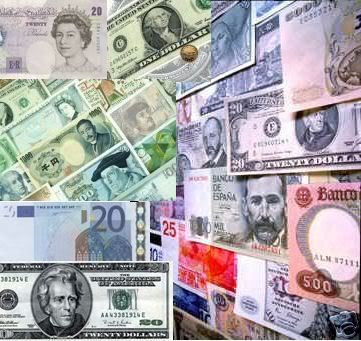Forex does not have to be complicated. It can be simple, straightforward, and extremely interesting. Before jumping in, it is crucial that we understand the Forex basics. This overview will explain all the Forex basics in the most comprehensible way.
extremely interesting. Before jumping in, it is crucial that we understand the Forex basics. This overview will explain all the Forex basics in the most comprehensible way.
Forex is short for Foreign Exchange (Forex market is short for Foreign Exchange market). It is also referred to as merely the two letters FX. The Foreign Exchange market is an international market in which currencies are being sold and bought. Currency is money; it is used as a medium of exchange; hence, the Foreign Exchange market is a market in which money is being sold and bought, in which money is being exchanged.
Think about it this way: When you walk into a store, you buy an apple and you pay with dollars, right? In the Foreign Exchange market you buy one currency (just like the apple) with another currency (just like the dollar). Instead of an apple, for example, you could buy a Euro (the official currency of the European Union), and you could pay for it with USD (the official currency of the United States of America). Makes sense, right?
with another currency (just like the dollar). Instead of an apple, for example, you could buy a Euro (the official currency of the European Union), and you could pay for it with USD (the official currency of the United States of America). Makes sense, right?
The value of currencies is not set in stone. Rather, it fluctuates; at times it decreases and at times, it increases. For now let’s not focus on the reasons for these changes, but lets just know that such changes exist (and constantly happen). One currency’s value is measured against the value of another currency. The way it is done is via an exchange rate. This is to say, that the exchange rate will inform you how much of a certain currency you can buy and how much it will cost you (like we already established, we are paying with one currency for the purchase of another currency)
In the Foreign Exchange market currencies are traded in real-time. Since the value of currencies changes (from second to second, minute to minute, month to month, year to year, etc, etc, etc) it is possible to make a profit from such transactions. If you are able to determine which currency’s value will increase by the end of a determines time (such as five minutes after placing the investment, or an hour, or two hours, etc), you will be able to make a profit.
For example: Lets say that you have 1 USD to spend. And let’s say you want to buy JPY (the Japanese Yen is the official currency of Japan). You learn that with 1 dollar you are able to buy 2.34 JPY and so you do exactly that. Now, an hour passes and you learn that with 1 USD you can now buy 2.50 JPY. This means that the dollar is now stronger than it was only an hour ago—because with the same amount of an investment (your initial 1 USD) you are now able to get more JPY (2.50 as opposed to 2.34).

No comments:
Post a Comment